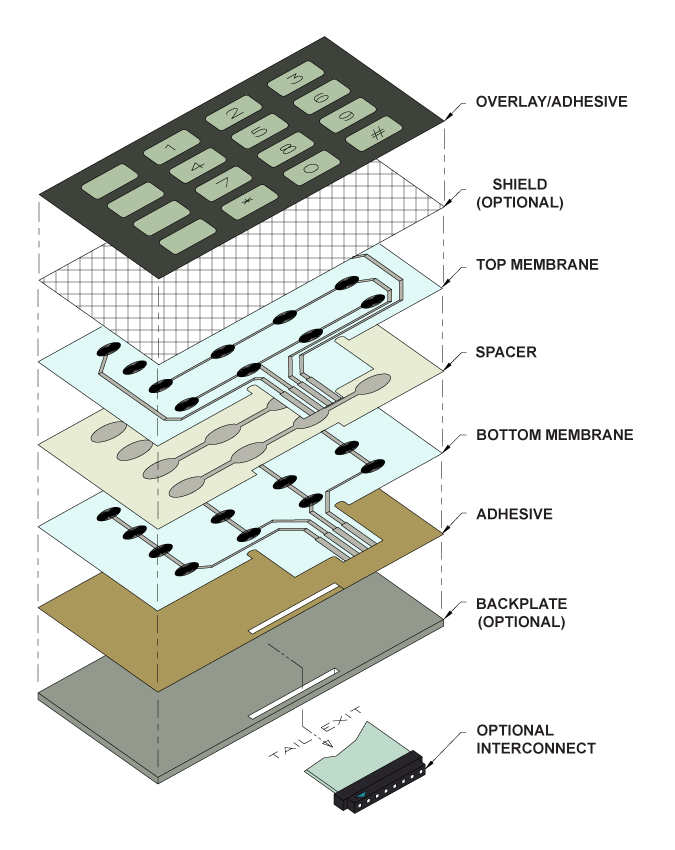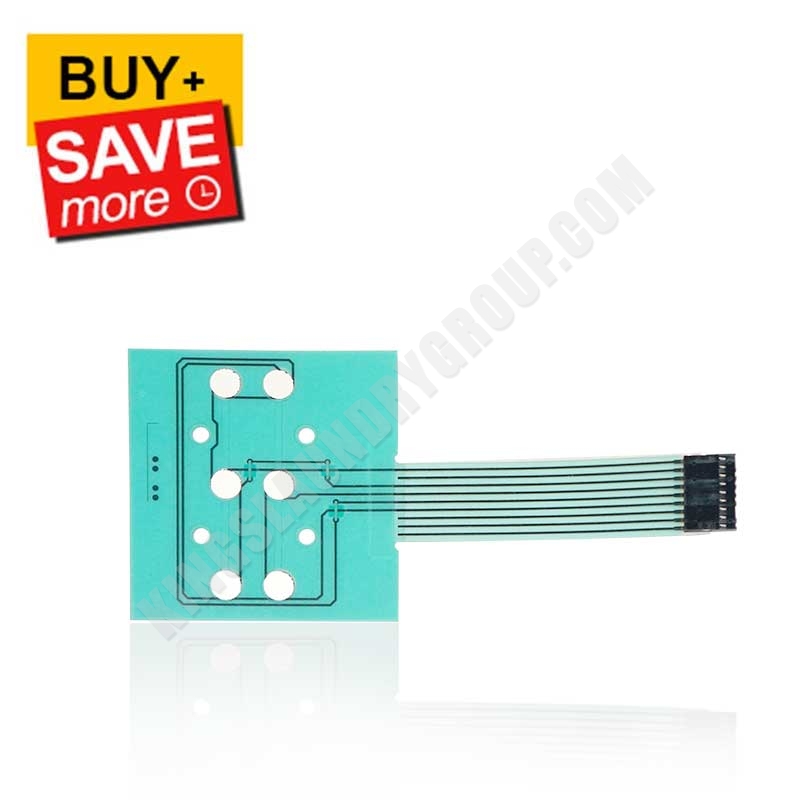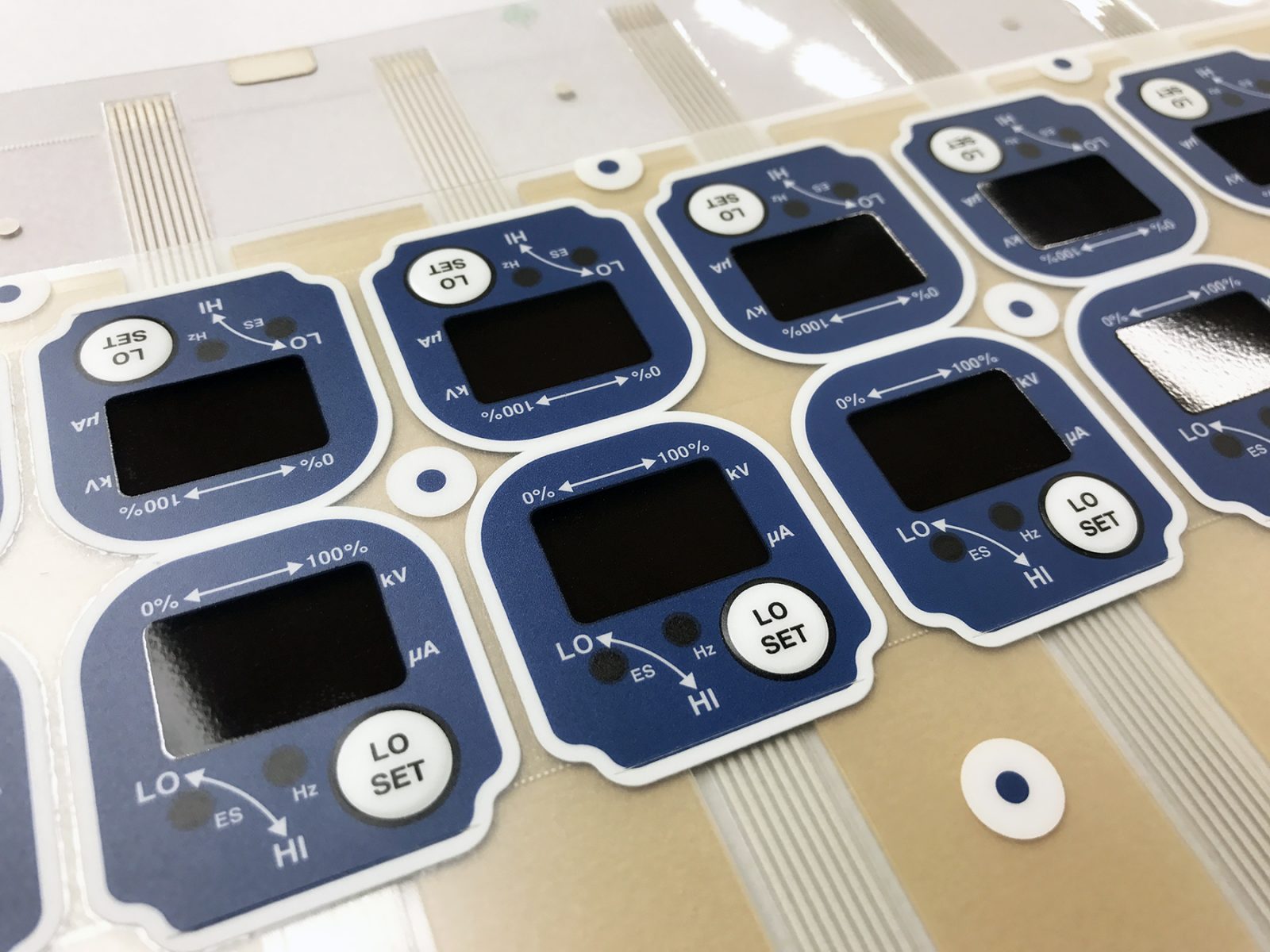The Duty of a Membrane Switch in Modern Touch Interfaces and Controls
The Duty of a Membrane Switch in Modern Touch Interfaces and Controls
Blog Article
Recognizing the Performance of Membrane Switches for Interface Tools
The performance of membrane layer changes stands for a substantial improvement in individual interface layout, integrating efficiency with visual flexibility. These switches run with a multi-layered framework that equates user communications into electrical signals, permitting both small layouts and durability against ecological factors. As industries increasingly focus on user experience, comprehending the nuances of membrane layer switch technology comes to be important. What effects do these innovations hold for future applications, and how might they redefine user interactions across numerous devices?
What Are Membrane Layer Buttons?
Membrane switches are ingenious interface devices that help with individual communication with digital tools. These functional elements are composed of several layers, including a graphic overlay, spacer, and a published circuit layer. The layout permits a smooth integration into numerous digital gadgets, improving both the visual and functional facets of customer interfaces.
Membrane layer switches are frequently utilized in a large range of applications, from house devices to commercial equipment and medical gadgets. Their building commonly features a thin account, making them an ideal option for small designs. The tactile responses offered by these switches can be engineered to satisfy certain user choices, guaranteeing reliable communication between the individual and the gadget.
Resilience is another significant benefit of membrane switches, as they are resistant to dirt, moisture, and chemicals, which enhances their life expectancy popular environments. Furthermore, these switches can be customized in terms of form, size, and graphic design, enabling branding and user-specific features. On the whole, membrane layer switches represent a functional option for boosting user experience in digital tools, incorporating performance with visual appeal in an effective fashion.
How Membrane Switches Over Work
Operating on an uncomplicated concept, membrane layer switches utilize a layered building and construction to register user input successfully. Each switch includes numerous layers, including a published circuit layer, a spacer layer, and a leading graphic layer, which are developed to work with each other perfectly. When an individual presses the top layer, it presses the spacer layer, bringing the conductive components of the circuit layer right into contact with each other.
This get in touch with develops a closed circuit, signifying the device to carry out a specific function. The style enables various setups, consisting of responsive responses, which can improve the customer experience by supplying a physical experience upon activation. The materials made use of in membrane layer buttons typically include versatile substratums, such as polyester or polycarbonate, which make certain durability and durability against deterioration.

Key Benefits of Membrane Switches

One more significant benefit is their compactness. Membrane switches are slim and light-weight, which allows manufacturers to conserve area in their tools without compromising capability. This function is specifically valuable in applications where weight helpful resources and volume are crucial factors to consider.
Furthermore, membrane layer switches are immune to dust, dampness, and chemicals, improving their durability. This strength extends their lifespan and minimizes the requirement for regular replacements, resulting in cost savings with time.
Moreover, the responsive feedback supplied by membrane layer buttons can be maximized to boost user communication. They can include functions such as increased buttons or audible clicks, enhancing usability and user experience.
Applications Throughout Industries
Individual interface tools making use of membrane layer switches prevail in a broad range of sectors, showcasing their adaptability and functionality. Membrane Switch. In the clinical industry, membrane layer buttons are essential to gadgets such as diagnostic tools and individual surveillance systems, where their durability and simplicity of cleansing are essential for maintaining health requirements. Likewise, in the auto industry, these buttons are employed in dashboard controls and infotainment systems, giving a smooth and modern interface for individuals.
In addition, the consumer electronics market advantages from membrane layer switches in appliances and portable gadgets, where portable layout and easy to use user interfaces enhance individual experience. Industrial applications additionally leverage membrane layer switches for control board in equipment and automation systems, highlighting their robustness and resistance to rough environments.
In the aerospace and defense sectors, membrane switches are made use of in cabin controls and tools, where integrity and performance under extreme problems are extremely important. Additionally, the gaming market significantly includes membrane layer buttons in controllers and arcade machines, adding to an appealing customer experience. On the whole, the flexibility of membrane layer changes allows their widespread usage throughout numerous industries, emphasizing their significance in modern-day user interface design.
Future Patterns in Membrane Switch Over Innovation

In addition, the use of sophisticated materials, such as polycarbonate and polyester movies, is expected to climb, providing enhanced sturdiness and resistance to ecological stress factors. These products add to the overall longevity of membrane buttons, making them ideal for harsher industrial applications.
Furthermore, the consolidation of clever modern technology, including IoT connectivity, will allow membrane layer buttons to connect with various other tools and systems, assisting in a much more interactive customer experience. This pattern lines up with the growing need for smart gadgets across different sectors, from healthcare to customer electronics.
Finally, personalization choices are expected to expand, allowing manufacturers to create bespoke solutions tailored to particular individual needs and preferences. These developments will certainly position membrane layer switches as vital parts in the advancement of interface technology.
Verdict
In conclusion, membrane layer switches over represent a critical development in customer interface innovation, using a dependable and flexible service for varied digital applications. As advancements in material scientific research and touch sensing innovations continue, the performance and applicability of membrane layer buttons are anticipated to broaden, enhancing their value in modern electronic gadgets.
Report this page